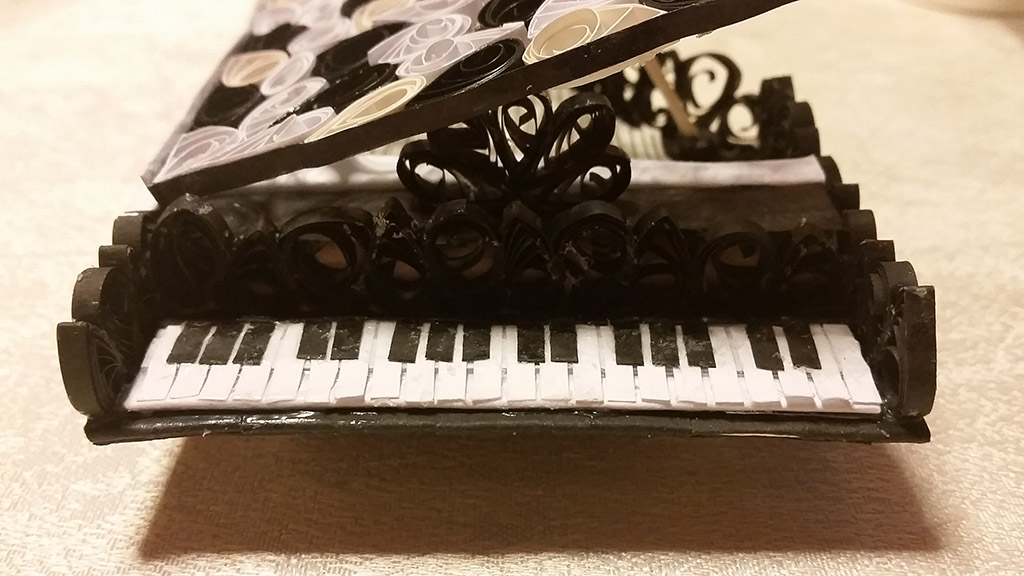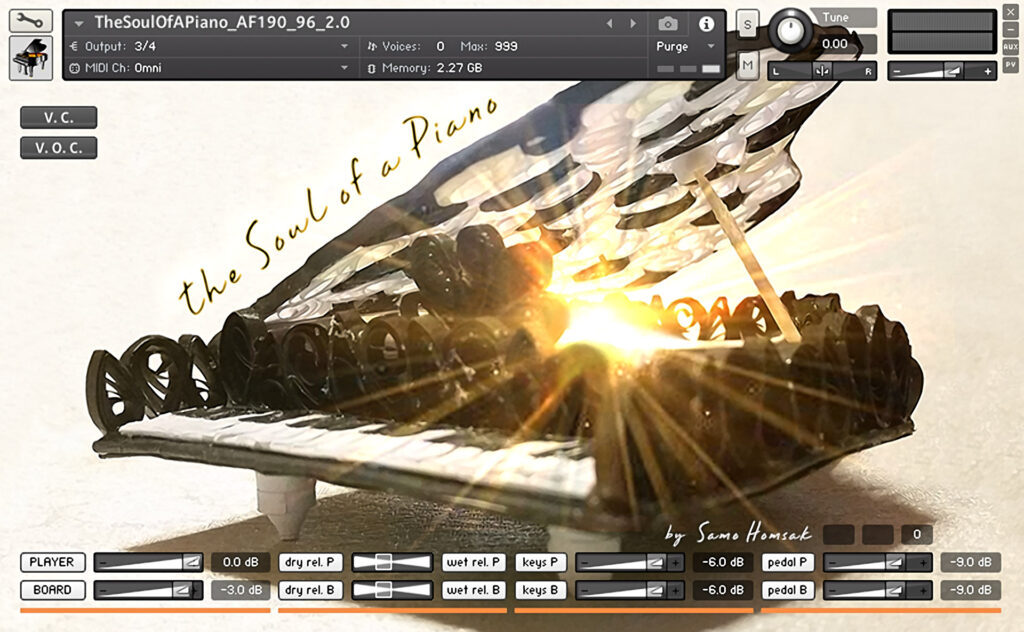The Soul of a Piano: AF-190 / NEW version 2.0
This is a sampling of an August Foerster Czech Republic 190 piano tuned to a Young's #1 well temperament at 444 Hz


BySamo Homsak
The story
### 2nd update ###
I’ve decided that also this final version is gonna be free. If you like it and want to support my future piano projects you can donate on my gumroad site or to my crypto accounts. Thank you 🙂
gumroad:
https://samohomsak.gumroad.com/l/AF190
arrr:
zs18vsmwljxfpun63cmlx2dxh32lmfq2mfluy2ngdhc05j7pln4yj5q4xy80rh75mw0sp34v6lfs4s
xmr:
456dLguN8AT6EHGsMqG5Q9LRYHczJNPmw8ZFYitUhf7f8muX3HoRgmXX2Lf6qnsizC6MsQE44diEDgQFuH3r33fvJ938pVb
What’s new in version 2.0
– more samples (before every third key was sampled, now every other one is)
– more tools: min,max,crv,fill-in and smooth on velocity curve (V.C.)
– velocity offset curve (V.O.C.) gui page with tool to fix midi-keyboard discrepancies
– new dry/wet release samples with slider to blend between
– revamped middle pedal (sostenuto)
– 96kHz/24bit samples
– and re-measured and fine-tuned velocities for even smoother response
### 2nd update ###
Beginning:
I couldn’t find a piano sample library, where I could experience the sound I hear or the feeling I have when playing on a real instrument. So I’ve decided to sample my own. This is my second attempt to achieve that experience, and it turned out to be quite nice. That’s why I’d like to share it with you.
Recording technique:
From my first attempt I knew that spaced stereo mic technique creates a “little hole” in the middle and I also noticed that there is a lot of sound coming from under a piano. I’ve solved this with a third microphone positioned on the floor and pointing at the middle of the soundboard which is also known as the soul of a piano. The sound from this third microphone, although very colored, nicely fills the hole in the middle and adds “body” to the sound that is lacking from the main two microphones on top.
Main (player) mics are Schoeps CMC-6 with MK2s omni capsules spaced 80 cm apart and positioned above strings dampers. Floor (board) mic is AKG C480-B with CK-62ULS omni capsule positioned under a piano in a triangular formation with the main mics.
Samples are recorded in 96kHz/24bit while piano is tuned to 444Hz and Young’s #1 well temperament.
Kontakt programming:
I was surprised that all piano sample libraries I’ve tested were based on normalized layers with zig-zag kind of a gain reduction/amplification curve to achieve “blend” between layers. I saw two problems here – timbre change that comes with louder sounds and high possibility of misplaced layers. I wanted to avoid all of that, so I’ve recorded samples with uniform gain and blended them according to their loudness. That way samples remained in true relation to each other and by blending them there is no sudden change in timbre!
I’ve measured each sample’s momentary LUFS and calculated blends between adjacent samples of each key in Excel. Used that info to import synchronized samples into Kontakt with api-lua script.
Besides GUI programming in KSP there were a couple of quite challenging things. My first major emphasis was on a velocity curve (V.C.) where I’ve used simple table of 127 levels, but I’ve expanded that with min, max, crv (curvature) knobs and load/save functionality.
When I was fine-tuning the keys, I realized that my midi keyboard (Kawai VPC-1 – quite heavily used) doesn’t produce the same velocities on all keys equally (anymore?!). So I’ve implemented a second tool to deal with that – velocity offset curve (V.O.C.) where it is possible to fine-tune midi keyboard response for even playing experience.
But the biggest challenge was to properly program the release samples. I’ve written some weird code to achieve that.
Couple of things I’d also like to mention:
Middle pedal (sostenuto) – works like a real thing.
The right pedal (sustain) sounds change according to speed of pressing a pedal (pedal needs to be continuous and not just on/off). There is one caveat – exporting recorded midi song needs to be done in real-time or the sustain pedal sounds will be wrong.
I’ve also “convoluted” wet release samples from dry ones and added a slider that blends between them.
Conclusion:
I’ve sampled my own piano this time so that I could better “hack” into all the nuances that piano has to offer. If you like it, I will produce even more versatile but especially high-caliber piano in the future. Enjoy 🙂
S
Interface

Reviews
The most consistent and playable
Oh my gosh. Whatever you did? DO IT AGAIN. This is the most playable piano I've ever tried on Pianobook and that says a lot as my target instruments in this website is the one that primarily focuses on capturing the pure acoustic piano experience. Take this as a sign to sample more pianos!
